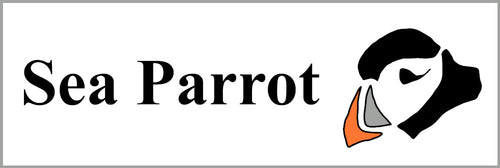Economy block or Square in a Square has become very popular in recent years and it's another great block that shows off my animal designs beautifully. I think it is called 'economy' because you use squares which means there is minimal waste of fabric.
I am going to show you how to make one block but if you are making one of my four seasons panels using 4 fat eighths, you will need to cut:
18 x 4 inch squares (6 from one fabric, 4 from each of the other 3)
18 x 3 inch squares (6 from 2 fabrics, 4 from 1 fabric and 2 from the last fabric)
As below:
For one block you will need:
2 4 inch squares of the same fabric
2 3 inch squares of the same fabric
1 animal design square cut so that it is 3 1/2 inches square.
To do this, cut one design from one of my fabric strips using the black marks as a guide (approximately 4 x 4 inches). Then trim each side until you have a 3 1/2 inch square. Make sure the motif is in the centre or where you want it to be.

1. Cut the 2 4 inch and 2 3 inch squares diagonally in half as shown in the picture below. It is particularly important to cut designs that have direction in this way. 
2. Take the central square and fold it in half but don't make the crease firm. Now make the crease firm only at each of the two edges, to mark the centre of the two sides. Open up the square and fold it in half the other way and repeat the creasing at only the two edges. Open up the fabric and you will have four marks indicating the centre of each side of the square. You could just measure and mark with a pen or pencil but this is easier and saves time.
3. Take small triangles a and b. Fold them in half along the long edge and make a crease in the centre just at the edge. Open them out. 
4. Pin the triangles, right sides together, to the top and bottom of the central square, matching up the creases. Sew, press the seams away from the central square and then trim off the tiny triangles at the edges. 
5. Take triangles c and d. Pin the triangles to the left and right of the central square, right sides together, matching the creases and making sure the fabric is in the correct orientation. Sew and press the seams away from the central square. Trim the pieced square so that it is as close to 4 3/4 inches square as possible (mine was a little small but I will show you how to sort that out later). 
6. Take large triangles A and B. Mark the centre of the longest sides with a crease as before. 
7. Pin the triangles, right sides together, A to the top right and B to the bottom left of the square, matching the central crease to where the corner of the central square would meet the edge.
This is also where you can adjust the size of your pieced square to make it 4 3/4 inches square. You can see below that I have placed the two large triangles just above and below the central square to make the central pieced square 4 3/4 inches high. 
8. Sew the triangles to the square but when you get to the middle lumpy bit at the corners of the square, slow right down and sew very carefully. This stops wobbly seams. Press the seams away from the central pieced square. Trim off the tiny triangles.
9. Take large triangles C and D. Pin the triangles, right sides together, C to the top left and D to the bottom right of the square, matching the central crease to where the corner of the central square would meet the edge. 
Adjust as before to make the central pieced square 4 3/4 inches wide.
10. Sew the triangles to the square, not forgetting to sew very slowly at the lumpy corners of the central square. Press the seams away from the square.
11. Trim the finished pieced block so that it is 6 1/2 inches square. Make sure that there is at least 1/4 inch between the point of the small inner triangles and the edge. This will make sure that the points are not cut off when piecing the blocks together. 
That's one block finished:

Don't look too closely at my points! I do try my best to be accurate but it seems like the harder I try, the worse I get. Maybe yours will be neater than mine!


